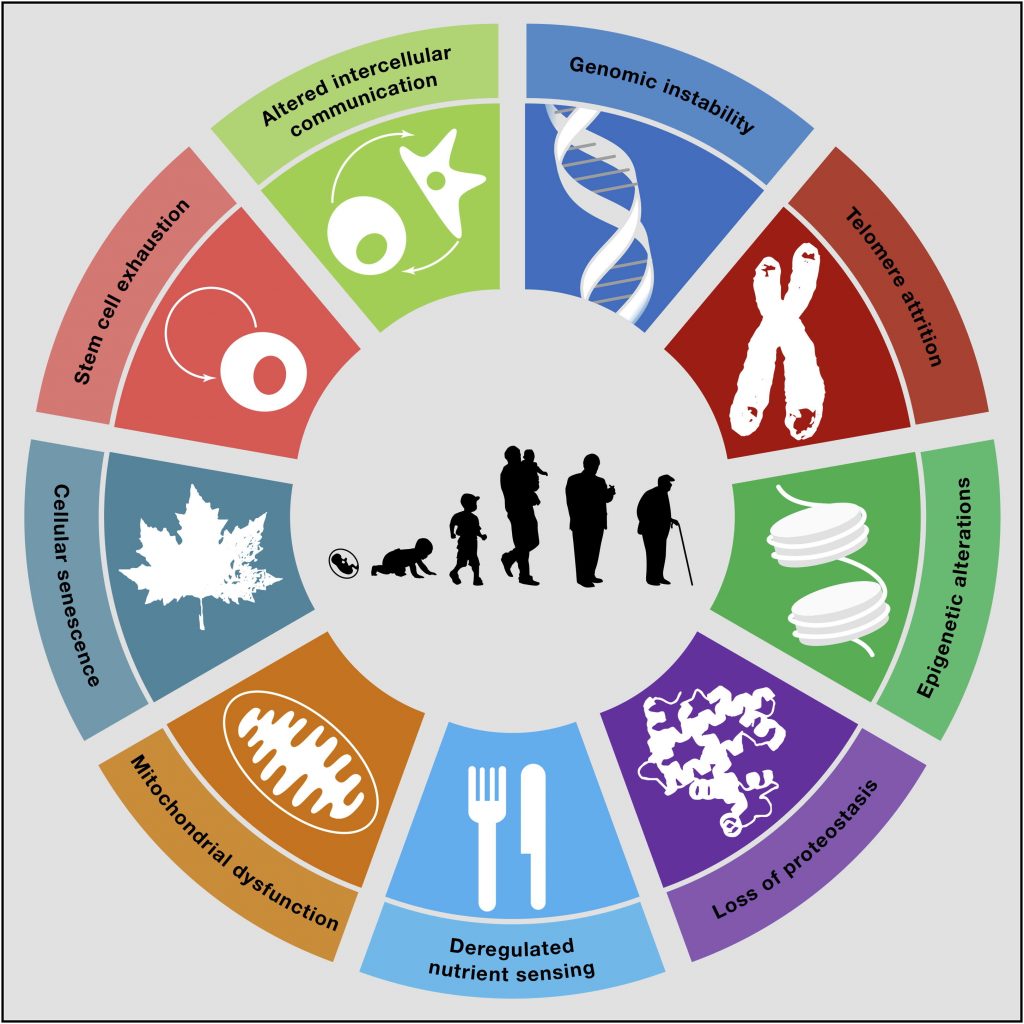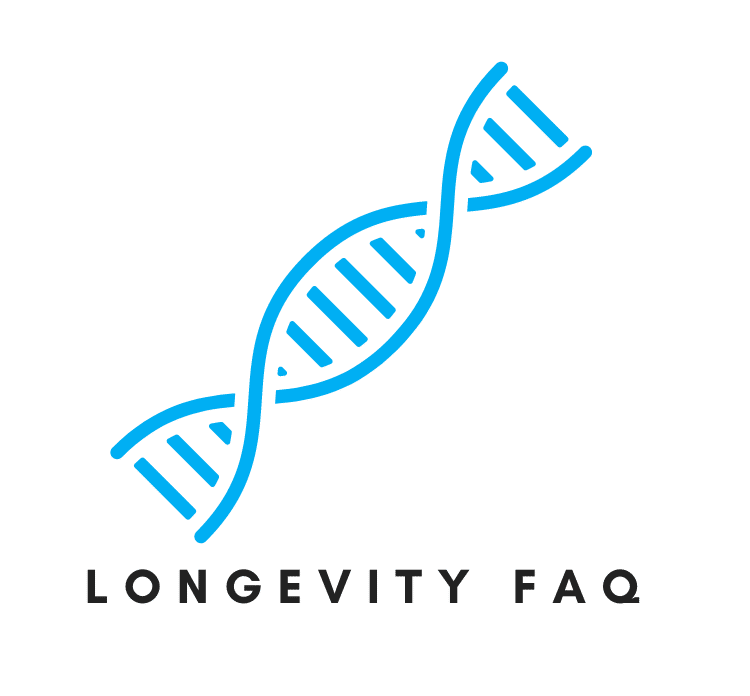The term “Hallmarks of Aging” was first introduced in a 2013 review paper by the same name published in Cell by researchers López-Otín, Blasco, Partridge, Serrano, and Kroemer. This concept has since become a widely accepted framework for understanding the underlying biological causes of aging and age-related diseases.
Hallmarks of Aging refer to nine interconnected cellular and molecular processes that gradually deteriorate, leading to aging and age-related diseases. These hallmarks are like the wear and tear on a car’s engine and other parts; as they accumulate, the car’s performance declines, and the likelihood of breakdowns increases. Similarly, as these hallmarks accumulate in our bodies, our health declines, and our susceptibility to disease increases.

The nine hallmarks of aging are as follows:
- Genomic instability: Accumulation of DNA damage over time.
- Telomere attrition: Shortening protective caps on the ends of chromosomes leads to cellular senescence.
- Epigenetic alterations: Changes in gene expression that affect cellular functioning.
- Loss of proteostasis: Impaired protein folding, function, and clearance.
- Deregulated nutrient sensing: Altered response to nutrients, affecting cell growth and metabolism.
- Mitochondrial dysfunction: Decreased energy production and increased damaging reactive oxygen species production.
- Cellular senescence: Irreversible cell cycle arrest, leading to inflammation and tissue dysfunction.
- Stem cell exhaustion: Depletion of stem cell reservoirs, impairing tissue regeneration and repair.
- Altered intercellular communication: Cell signaling changes affecting tissue function and inflammation.
To slow down or reverse the Hallmarks of Aging, various lifestyle, dietary, and therapeutic interventions can be implemented, such as:
- Regular exercise
- Caloric restriction or intermittent fasting
- Antioxidant-rich diets
- Targeted supplementation (e.g., resveratrol, NAD+ precursors)
- Hormesis (e.g., cold exposure, heat stress)
- Senolytics (pharmacological agents that target senescent cells)
Some influential books discussing the Hallmarks of Aging include:
- “The Longevity Diet” by Valter Longo
- “Lifespan: Why We Age—and Why We Don’t Have To” by David A. Sinclair
- “The Telomere Effect” by Elizabeth Blackburn and Elissa Epel
At the time of writing this post, the review paper has been cited 11,799 times, expanding upon the Hallmarks of Aging. These studies cover a wide range of topics, including the molecular mechanisms of aging, the role of hallmarks in specific age-related diseases, and the development of interventions targeting these hallmarks to promote longevity and healthspan.
« Back to Glossary Index